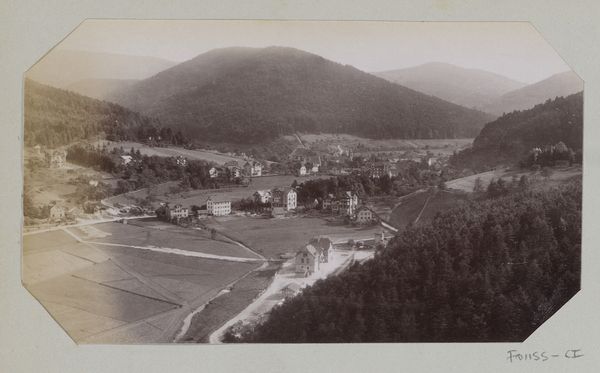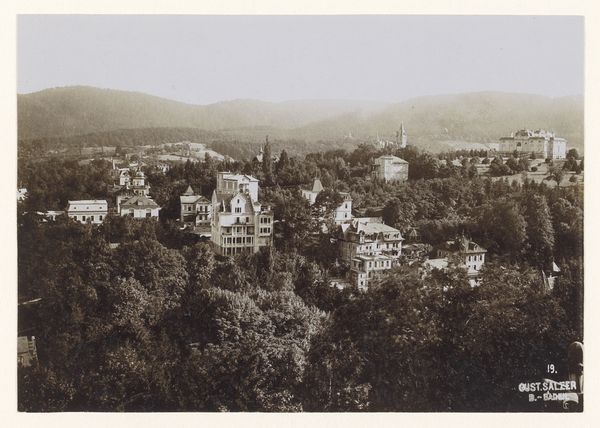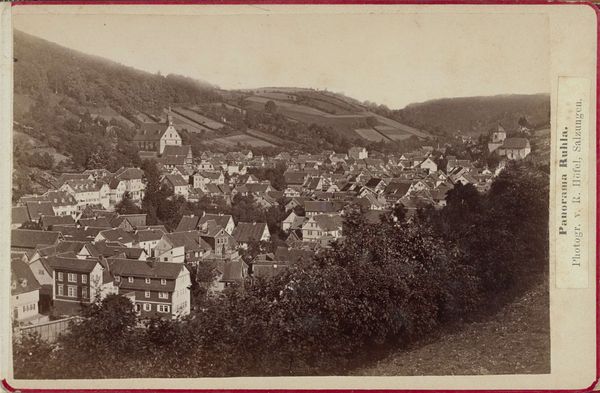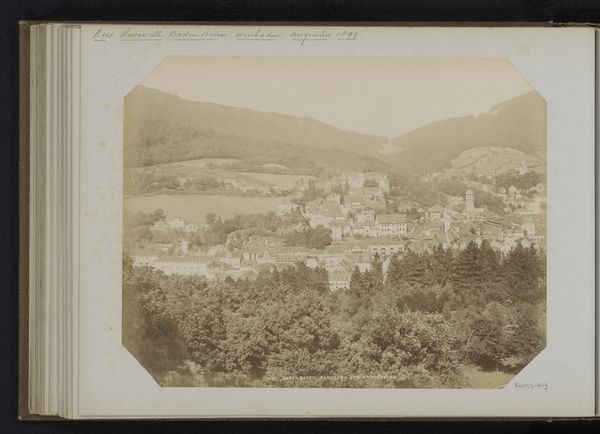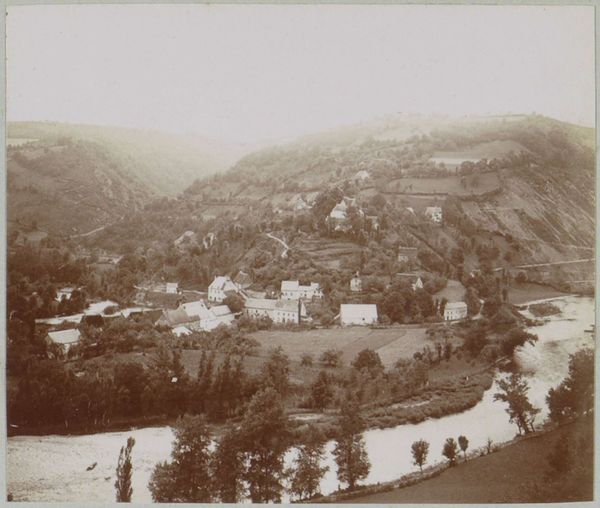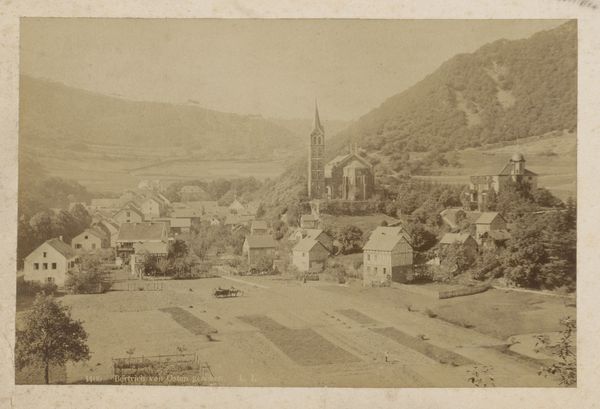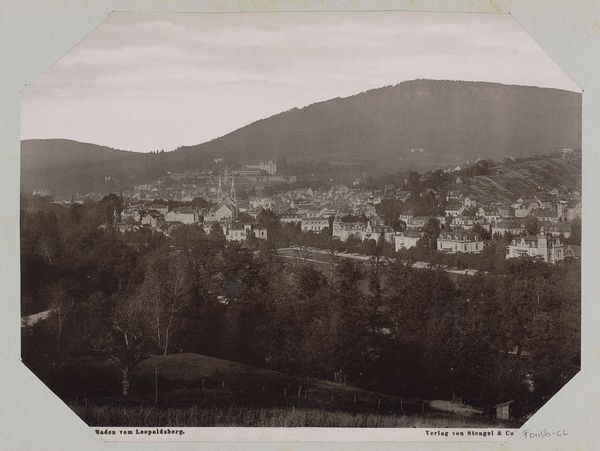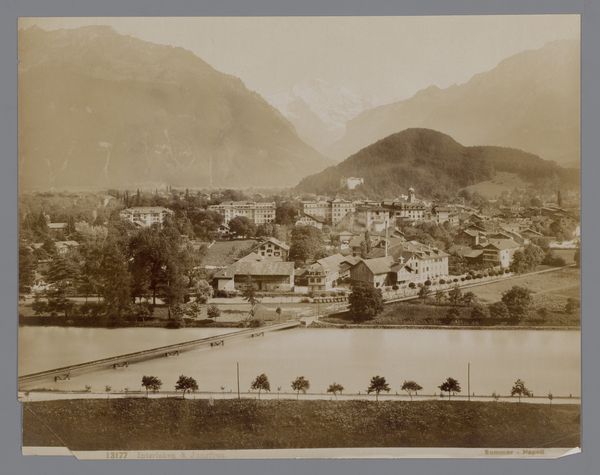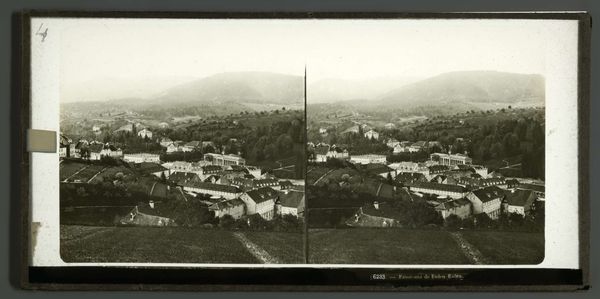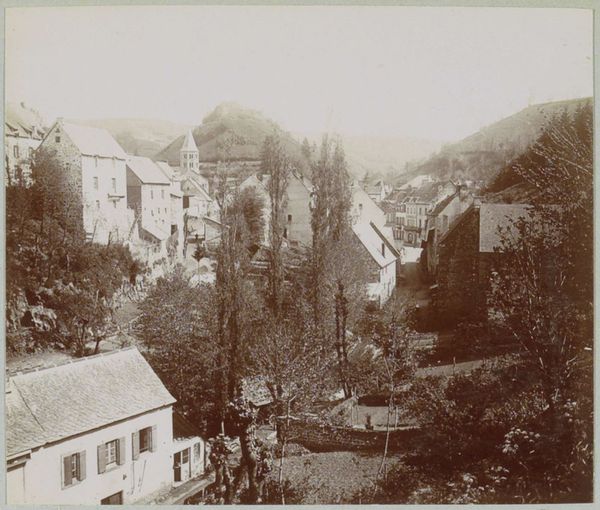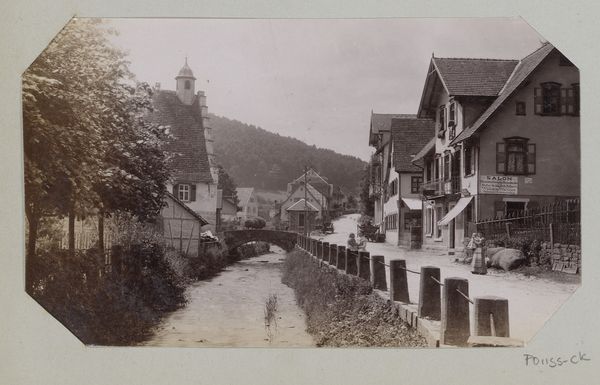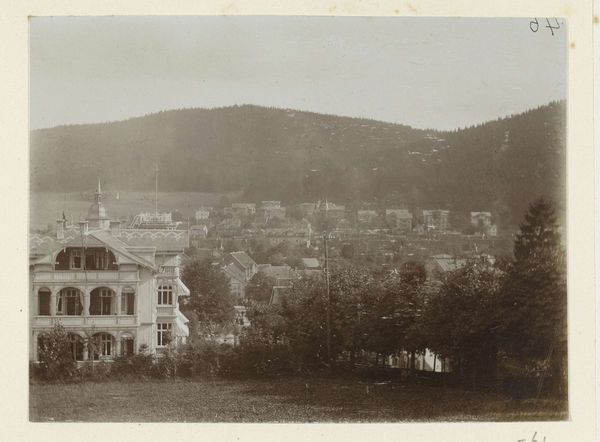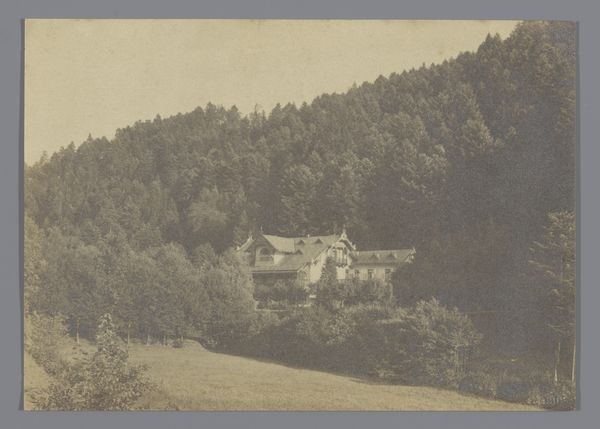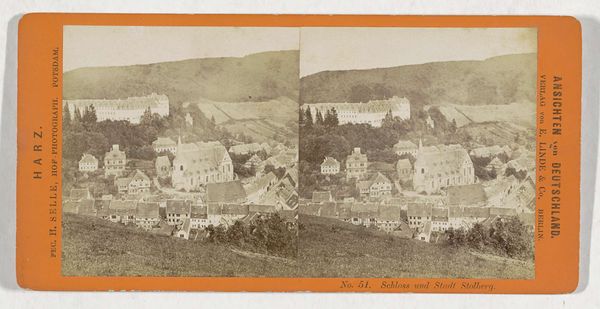
photography
#
pictorialism
#
landscape
#
german-expressionism
#
charcoal drawing
#
photography
#
cityscape
#
watercolor
Dimensions: height 258 mm, width 355 mm
Copyright: Rijks Museum: Open Domain
Curator: Here we have "Gezicht op Bad Herrenalb," a work from 1899 by Albert Schmidt. It captures a town nestled within a valley. The work is photography with a feel reminiscent of watercolor and charcoal drawing, doesn't it? Editor: It has an ethereal quality, almost dreamlike. The tonality leans toward monochrome, a sophisticated grey-scale that flattens perspective while emphasizing the subtle gradations of light across the landscape. Curator: Schmidt was working in a Pictorialist style, a movement where photographers used soft focus and printing techniques to create images that resembled paintings. This adds a romantic, almost nostalgic, element to the image, like viewing a memory. Bad Herrenalb itself becomes an almost idealized, perhaps even fictionalized, locale. Editor: I find myself considering the composition: the steep, embracing hills form a visual frame, hemming in the town. This creates an immediate sense of enclosure and security, maybe a touch of visual repression too. The careful arrangement—foreground trees leading into the clustered buildings—directs the eye deliberately. It's a masterful manipulation of perspective, almost cinematic. Curator: The location, Bad Herrenalb, has historically been known for its thermal baths and as a place of retreat and healing. You could say the imagery hints at themes of sanctuary and perhaps escapism—a place where nature cradles civilization, allowing for a return to a simpler state of being. This period coincides with rising industrialization and urbanization, so these views also symbolize nostalgia for pre-industrial Germany. Editor: Yes, that gentle cascade from detailed foreground to subtly blurred background reinforces the idyllic aspect, creating an interesting tension with the reality of life at that time. Even the octagonal border emphasizes the work as an enclosed aesthetic object that frames how the village should be seen by visitors and tourists of the era. Curator: This artwork provides an intriguing window into a turn-of-the-century mindset. It shows how landscape can carry deeply coded cultural yearnings. Editor: Precisely. Looking at how Schmidt balances tonal control with structural layout gives profound insight into not just his own creative drive, but his response to society at large.
Comments
No comments
Be the first to comment and join the conversation on the ultimate creative platform.
